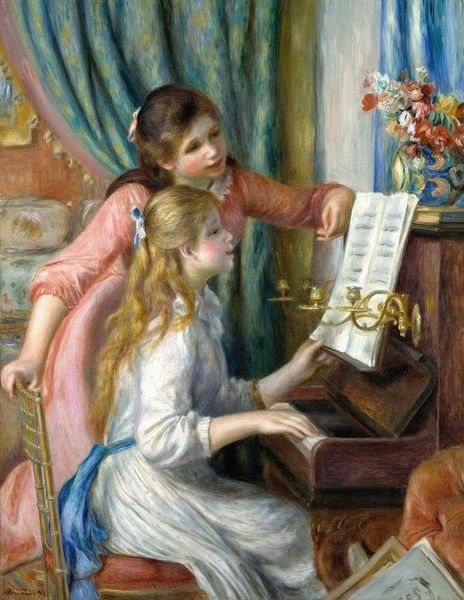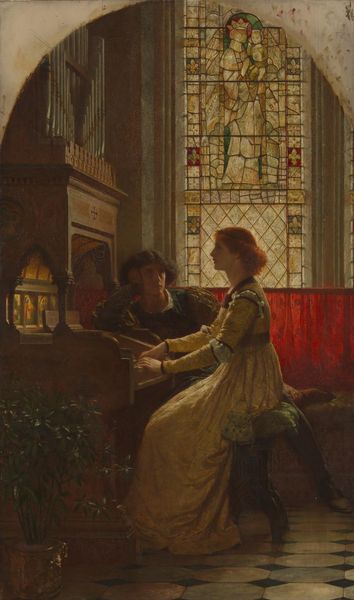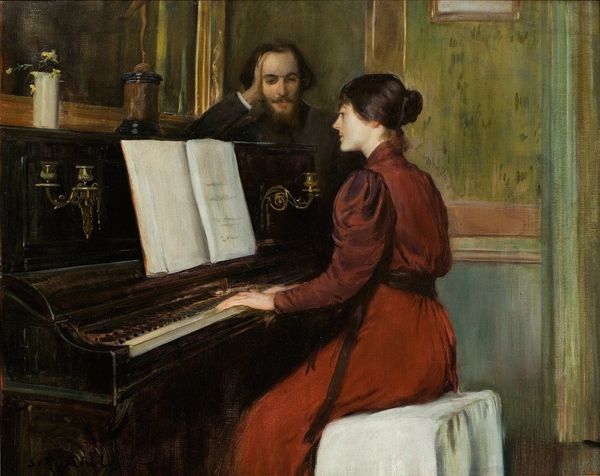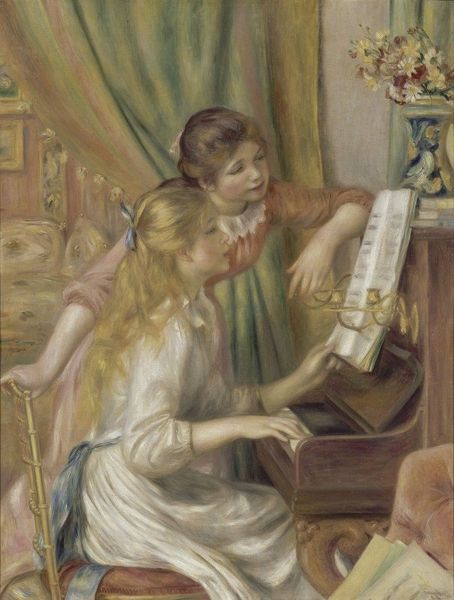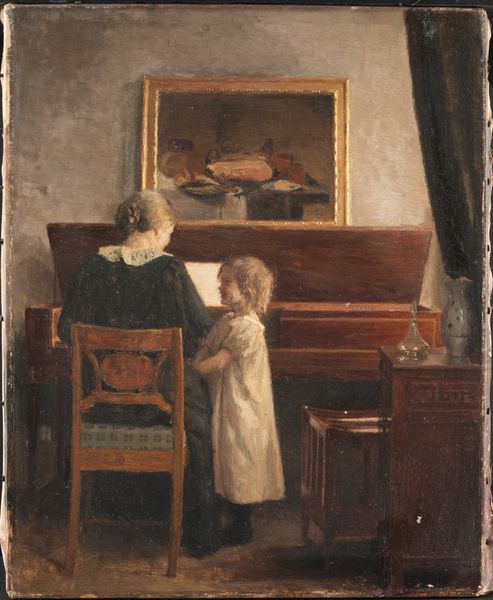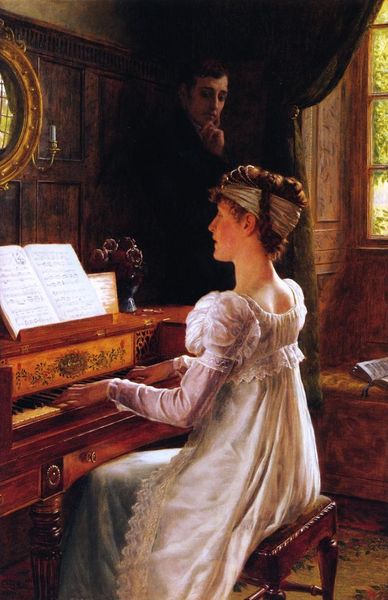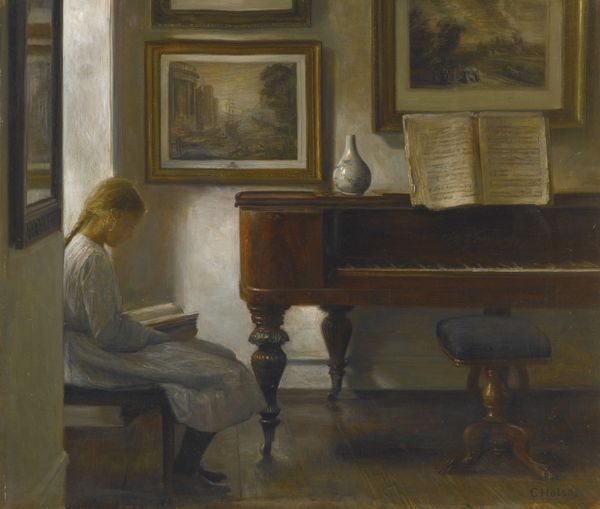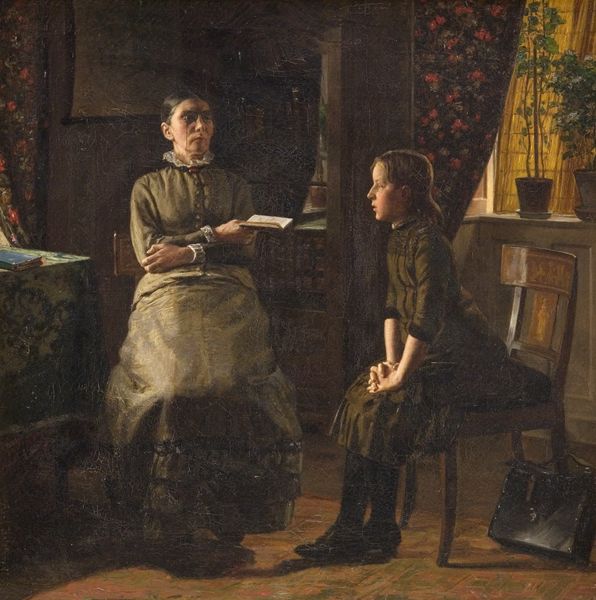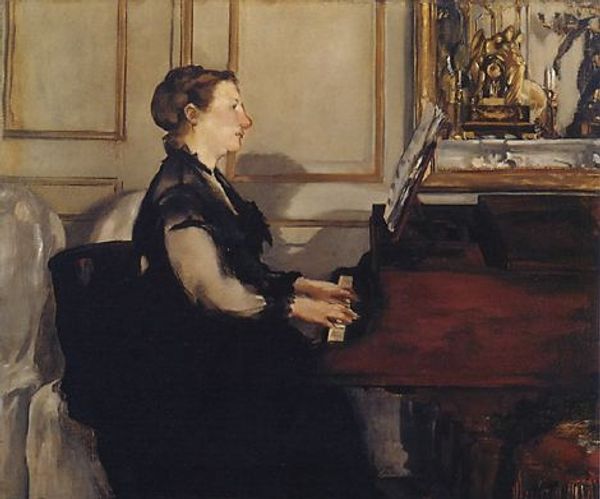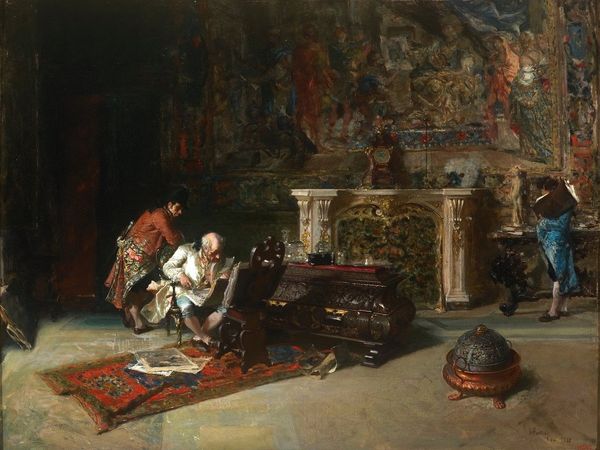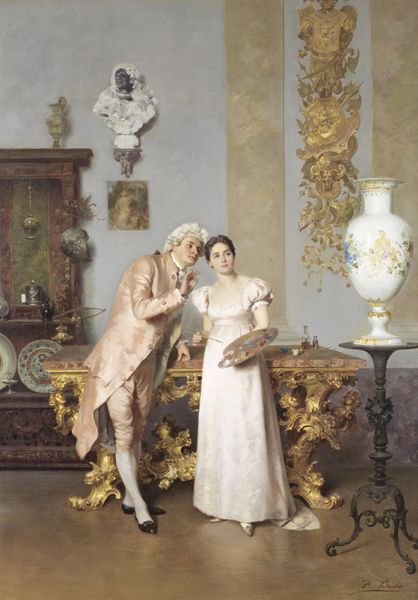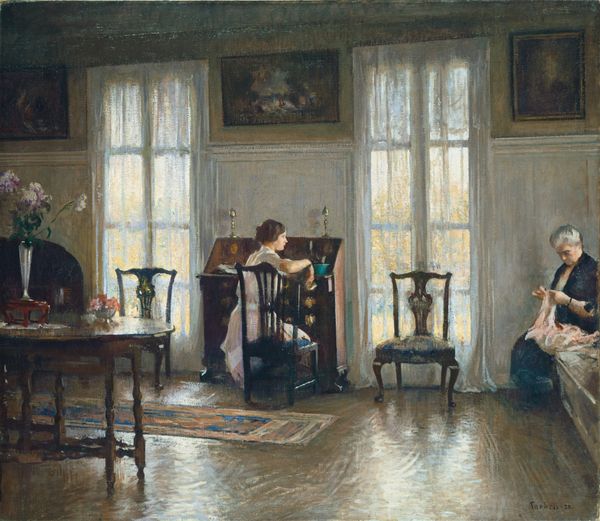
Dimensions: 56 cm (height) x 48 cm (width) (Netto), 62.5 cm (height) x 54.2 cm (width) (Brutto)
Curator: This is Michael Ancher's "Children Singing," completed in 1899. It’s an oil on canvas and is part of the collection here at the SMK. Editor: Immediately, I’m struck by the warmth and light emanating from the canvas, contrasted by a rather somber mood in the depicted interior. The subdued color palette works to concentrate focus on the children. Curator: Absolutely. The interplay between realism and romanticism is noteworthy here. Ancher, working within the late 19th-century Danish art scene, captures a very specific domestic moment, elevating it to something quite tender and idealized. We see genre painting conventions mixed with portraiture. Editor: I'm particularly drawn to how the structural composition emphasizes the triangular formation of the three figures around the piano. The girl at the keyboard, illuminated in white, forms the apex, anchoring the gaze. Is there a visual narrative, do you think, about individual talent harmonizing within a social context? Curator: Ancher was part of the Skagen Painters, a community of artists drawn to the northernmost point of Denmark. They often depicted the lives of fishermen and the local community, but this feels more intimately domestic, hinting perhaps at the cultural values surrounding music and education in middle-class homes. Music here is presented as the social fabric. Editor: Yes, I perceive that reading of this artwork and find your insight profound. Thinking about form, the layering of textures, from the intricate patterns on the rug to the reflective surface of the piano, contributes to a richness that contrasts with the relatively simple clothing of the children. It's not just realism for realism’s sake; the materials are very much at play. Curator: One could certainly argue that it reflects the broader artistic interest of that time. The artwork reflects ideas that circulated concerning childhood innocence, artistic training and middle class aesthetic and education standards. Editor: It makes you ponder the function of art and representation. Through such carefully chosen compositions, he isn't just painting children, but perhaps also embedding socio-political cues and understandings that elevate his art and allows for sustained and renewed interest by successive audiences and historians alike. Curator: Precisely, making Ancher’s piece worthy of careful contemplation still today. Editor: Indeed, a visual harmony of both formal construction and historical implication.
Comments
No comments
Be the first to comment and join the conversation on the ultimate creative platform.
